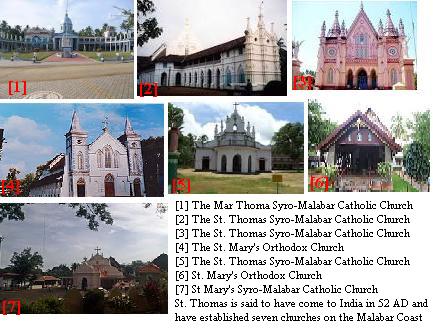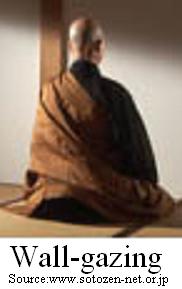Review:The baptism of the Holy Spirit (Meditation and four Practices)
・Blessed are the poor in spirit, for theirs is the kingdom of heaven.
・Blessed are those who mourn, for they will be comforted.
・Blessed are the meek, for they will inherit the earth.
・Blessed are those who hunger and thirst for righteousness, for they will be filled.
・Blessed are the merciful, for they will be shown mercy.
・Blessed are the pure in heart, for they will see God.
・Blessed are the peacemakers, for they will be called sons of God.
・Blessed are those who are persecuted because of righteousness, for theirs is the kingdom of heaven. (Matthew 5:3-10)
The propagation of the baptism of the Holy Spirit to East Asia

The baptism of the Holy Spirit, created by Jesus, the son of a Nazarene carpenter, who had been baptized at the Jordan River by John the Baptist (Mark 1:9/ Mat 3:13) and had made a debut to the religious society of Jerusalem with testimony of John in Bethany, was centered in the manifesto of the Jerusalem Church, which had been established at the meeting place of the Essenes adjacent to the residence of the High Priest Caiaphas, barely one and half month after the Crucifixion, as an umbrella organization supervising the church movement by about four million overseas gentile believers and about eight hundred thousand followers of different Jewish factions in the country. The baptism of The Holy Spirit, which had been transmitted to India by one of the Twelve, Thomas, who is honored as the twin of Jesus (Both Didymus and Thomas mean twin in Greek and in Aramaic respectively), was brought into the tradition of aphoristic teaching of Zen Buddhism and then sublimated into riddle-like koans (subject which Zen-masters give each religious to learn and practice the doctrine of Buddhism).
To synchronize with Christ who is the Alpha and the Omega
Initially, the followers of the primitive Church seem to have believed that the second Christ coming would be at around AD 33-34 and then the kingdom of God would be realized immediately in this world based on Daniel's 'Seventy Weeks prophecy' in the Old Testament. But both the temple and the city of Jerusalem were destroyed by the Roman army during the first and the second Jewish war which occurred in AD 66 and 70 respectively. The expectation was betrayed by completeness. In the four Gospels of the New Testament, that were completed one after another after the Jewish war, seem to reflect how the different groups, which had led the early church movement, digested these setbacks.
John, the son of Zebedee, who is said to have been exiled to an isolated Island Patmos in the Aegean Sea, wrote the Book of Revelation as a sequel of "Daniel's prophecy" and implied that the kingdom of God would not be realized so easily and even if the Kingdom might appear, the evil spirits would be unleashed again after a thousand years, and once again this world would transform to the inferno. However, Christ in this book implies that the last day will not come soon, but he also says repeatedly, "I will come soon." As it means that if we synchronize with Christ who is the Alpha and the Omega, we can obtain eternal life at once without need to wait the last day and may have the full measure of his joy within us. (John 17:13)
Gospel of Matthew's practices of perseverance
On the other hand, the Gospel of Matthew, which seems to have been compiled by the group that had fled the city just before siege by Roman army and withdrawn to Pella under the Herodian royal family, preachs that the way to heaven is promised through practices of perseverance in this world, saying: Blessed are the poor in spirit, for theirs is the kingdom of heaven. Blessed are those who mourn, for they will be comforted. Blessed are the meek, for they will inherit the earth. Blessed are those who hunger and thirst for righteousness, for they will be filled. Blessed are the merciful, for they will be shown mercy. Blessed are the pure in heart, for they will see God. Blessed are the peacemakers, for they will be called sons of God. Blessed are those who are persecuted because of righteousness, for theirs is the kingdom of heaven. (Matthew 5:3-10)
Meditation and four Practices

Bodhidharma, who is said to have left South India, come to the Shaolin temple on Mount Song in Henan Province and faced a wall for nine years to transmit the Mind Seal of Zen Buddhism to China during the era of Wei, Jin, and Southern and Northern Dynasties period (220-589 CE) of China, described the essence of 'the baptism of the Holy Spirit' in his book 'the Treatise on the Two Entrances and Four Practices,' saying; "There are many ways of entering into enlightenment, but all of them may effectively be subsumed under two categories: the 'entrance of principle (理入)' and the 'entrance of practice (行入).' The entrance of principle is to synchronize with Christ, who is the Alpha and the Omega, through 'wall-gazing (壁観),' that is 'Zazen (坐禅).' And the 'entrance of practice' is the identical 'practices of perseverance' which is preached in the Gospel of Matthew. According to 'the Treatise on the Two Entrances and Four Practices,' the entrance of practice deals with enlightenment through many different daily practices. However, following 'four practices' encompass all other practices. These are; the 'practice of retribution of enmity,' the 'practice of acceptance of circumstances,' the 'practice of the absence of craving' and the 'practice of accordance with the Dharma.'
Who was Law Master?
Tanlin (昙林506–574), who wrote the preface to 'the Treatise on the Two Entrances and Four Practices,' was familiar with Chinese and Sanskrit and engaged in translation of Buddhist scriptures during from 538 AD, the first year of YuanXiang period to 543 AD, the first year of Emperor Wu of the kingdom of Northern Wei dynasty together with Gautamaprajna ruci (瞿曇般若流支), Puti liuzhi Sanzang (菩提流支三藏, the same name of the culprit who poisoned Bodhidharma), Vimoksaprajna-rsi (毘目智仙), Buddhasanta (佛陀扇多) and others.
According to tradition, Tanlin was cut off one of his arms by a robbery but was rescued his life with the help of HuiKe, one of his friends. Thereafter, he was called 'Lin-the-Armless.' This story is somewhat reminiscent of the legend that Huike cut off his left arm and presented it to Bodhidharma as a token of his sincerity.
Bodhidharma is a sound copy from Sanskrit. Bodhi means completion of the supreme wisdom, that is, enlightenment and Dharma means 'cosmic law and order.' Thus, Tanlin translated 'Bodhidharma' as 'Law Master (法師)' in his preface to 'the Treatise on the Two Entrances and Four Practices.' Why did not he use Bodhidharma as it is? Did not he recognize Bodhidharma as a proper noun but recognize it as a common noun? Or did he call Bodhidharma 'Law Master' and express his respect for him because Tanlin was Bodhidharma's disciple? However, It is not certain whether Tanlin was a disciple of Bodhidharma. All of following books, 'The Record of the Buddhist Monasteries of Luoyang《洛阳伽蓝记》,' 'The Further Biographies of Eminent Monks《续高僧传》' and 'The Jingde Records of the Transmission of the Lamp《景德传灯录》,' refer to the name of 'Bodhidharma' but it is uncertain whether these Bodhidharmas were the same person or not.
Northern Chan's First Patriarch is Gunabhadra
By the way, according to the genealogy of 'LankavataraMasters《楞伽师资记》' written by disciples of Yuquan Shenxiu (玉泉神秀 606?-706), who had received the Fifth Patriarch Hongren's mind seal and had become the founder of the Northern Sehool of the Chan (Zen) Sect, the First Patriarch of Zen Buddhism in China is Gunabhadra(求那跋陀罗394–468) and Bodhidharma is the Second Patriarch. It is followed by the Third Patriarch HuiKe (慧可), the Fourth Patriarch SengCan (僧璨), the fifth Patriarch DaoXin (道信), the Sixth Patriarch HongRen (弘忍), the Seventh Patriarch Shenxiu (神秀) and the Eighth Patriarch PuJi(普寂).
Gunabhadra was a monk of Mahayana Buddhism from Magadha, India. He travelled to China by sea with Gunavarma(求那跋摩367?-431) from Kashmir in 435. They were both treated as honored guests by Emperor Wen of Liu Song (刘宋文帝424-453), the ruler of South China at the time. In China, he translated the key Mahayana sutras, such as the Lankavatara Sutra (楞伽经), the sutra 'Bimashokyo (鞞摩肃经)', commonly known as 'Jingo-ji kyo(神護寺経)' and the Samyuktagama {杂阿含经}, from Sanskrit to Chinese. He continued to be active in other translations and preaching. He also seems to have crossed the Yangzi River, come to the kingdom of Wei and lived in the Shaolin temple. One of his disciples, Guangtong Fashi HuiGuang (光统法师慧光) is said to have been one of two who tried to poison Bodhidharma six times.
On the other hand, the preface of 'Dharmatrata Dhyana sutra《达摩多罗禅经》,' translated by Indian Buddhist monk, Buddhabhadra (佛驮跋陀罗359-429), describes that Buddhabhadra is a second-generation disciple of Dharmatrata(达摩多罗). The 'Dhyana sutras' focus on the concrete details of the meditative practice of the Yogacarins (Sarvastivada Darstantika:说一切有部譬喻者派) of northern Gandhara and Kashmir. Dharmatrata is said to have created the meditation manual together with Buddhasena(佛陀斯那).
Arrival of monks from overseas and Zen boom
Around this time, Gunavarma and Dharma-mitra (昙摩密多356—442) seem to have conveyed Hinayana Zen Buddhism to China, while Baozhi (宝志418-514) who had studied Buddhism at the Daolinsi(道林寺)temple of Zhong Shan(Nanjing, Jiangsu province), seems to have preached Mahayana Zen Buddhism. He received the devotion of Emperor Wu of Liang (梁武帝).
SengZhao(僧肇384-414), known as being among the ablest of the disciples of Kumarajiva(鸠摩罗什), also promoted Mahayana Zen Buddhism at Waguansi(瓦官寺) temple in Nanjing of Jiangsu province. In Zhongxing Chanfang (中兴禅房), built by Emperor XiaoWu (孝武帝373-396) of Jin (晋) dynasty, Zen masters from India and Central Asia are said to have always instructed about 200 monks.
Paramartha (真谛) from Ujjain in central India, who is known as the translator of 'Abhidharmakosakarika (Verses on the Treasury of Abhidharma:阿毗达磨俱舍论)' written by Vasubandhu, cofounder of the Yogacara philosophical school, received support from royalty--the Indian government of his time-- for his travels to spread the teachings of Buddhism. Emperor Wu of Liang also sent ambassadors to bring Paramartha to the Chinese imperial court. Paramartha arrived in China on September 25, 546 CE. Thus, Zen boom seems to have occurred even in south China round about the time when 'the Treatise on the Two Entrances and Four Practices' was written in the central plains of China (中原) or around Dunhuang (敦煌) region.
<To be continued>What is "Baptism with The Holy Spirit"?
According to the dialectic of the Gospel of John,
【Thesis】"A man can possess eternal life through accepting testimony of the Son of man and being baptized by him." (John 5:24)
【Anti-thesis】But "The one who comes from the earth cannot accept the testimony by one from heaven."(John 3:32)
How then can a man possess eternal life?
【Synthesis】"If you want to be baptized with the Holy Spirit, you can just go back to the word which was with God in the beginning (John 1:1) and certify that God is truthful. (John 3:33)"
When he said, "You are Huichao," Zen Master Fayan thrusted vivid Self in Huichao in front of his eyes.
Purchase here
○One world:
Your Comments / Unsubscribe
SEAnews Twitter
SEAnews Messenger
SEAnewsFacebook
SEAnewsGoogle
SEAnews eBookstore
SEAnews eBookstore(GoogleJ)
SEAnews world circulation